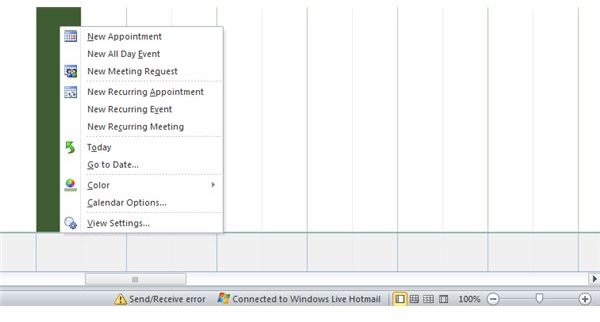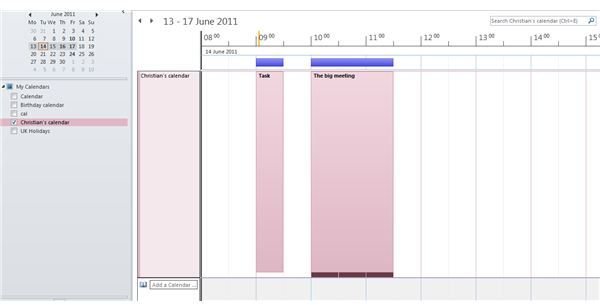How to Create a Work Schedule in MS Outlook
Time Management with Microsoft Outlook
You might think that it is just for email, but Microsoft Outlook is also a great tool for time management, combining tasks, a calendar and a scheduling tool. Using these various features to assist in organizing your time is simple, although it will require a little bit of work to set up.
If you work with an Outlook account hosted on an Exchange Server, you will gain additional benefits if you are also able to synchronize a mobile device with the account. After you have created a work schedule in MS Outlook, this should be available for you to use on your smartphone or perhaps a laptop, enabling you to keep tabs on what tasks you should be working on, and when.
So, how do you get started turning your email client into a dynamic time management and scheduling system?
It is actually quite simple, and requires no extra skills, just understanding of the task and calendar tools featured in Outlook.
Task Management in Outlook
Via the Tasks button in the lower-left corner of the Outlook window, you can add, remove, assign and mark complete as many tasks as you need.
The window is split into a menu of task types on the left, a preview pane in the center and a calendar and summary of any currently flagged items (email tasks that you have marked for further attention) on the right.
In addition to this, the Task Tools > Task List menu on the ribbon is created when you select Tasks, and here you can assign categories, alter flags, assign to a folder or apply a level of importance appropriate to the task.
Creating new tasks is a simple matter of clicking New Task in the menu, right-clicking anywhere and selecting New Task or using the Click here to add new Task field. You can also right-click and use the New Task Request option to email a colleague with a request to complete a task as specified in your message.
Calendar Management and Schedule View

Meanwhile, the Calendar view will display your current Outlook calendar in any number of ways, from a single day to all 30 or so days of the month. In addition, any additional calendars that you have setup (see Viewing Multiple Outlook Calendars for more on this) can also be viewed.
Outlook also features a single day Schedule View, into which you can add appointments and tasks that you or the person who owns the calendar in question can use.
Using the ribbon menu in Outlook 2007 and 2010, you can add a New Appointment, a New Meeting or even use the New Items drop down menu to create a Task.
With these tools (which are probably familiar to you in some respect, either from using them regularly or receiving a meeting request from a colleague) you should be able to follow the section below, in which we look at how a schedule can be created and followed.
Using Schedule View to Manage Your Workflow

Schedule View offers a simple to understand illustration of how your work over a week – using a single day at a time – is organized. Using a left-to-right scroll bar you should be able to see which appointments are coming up and manage the gaps to send emails, catch up on other jobs and get up to date on any tasks that you might be working on. One of the benefits of this view is that it is easier to move items around than in, say, the Week calendar, so if you get stuck in traffic on your way to an appointment, after rescheduling it you can easily drag the entry to another timeslot.
You don’t have to use Schedule View to do this, however, as creating and managing schedules is a key aspect of all of the calendar views. If you prefer to add, access and edit any currently open tasks from a calendar view, you should opt for the Day, Week or Work Week options, where the Tasks pane is visible at the foot of the view. You can easily create new tasks by clicking the mouse in this area and adding a task name, start and due dates and any reminder that you need.
Note however that calendar items are more likely to be synced with a mobile device than task items. As such if you are regularly keeping track of where you need to be via a mobile phone (perhaps you sync Outlook with an iPhone or Windows Phone) then don’t use tasks for important items.
References
Author’s own experience.
Screenshots provided by the writer
